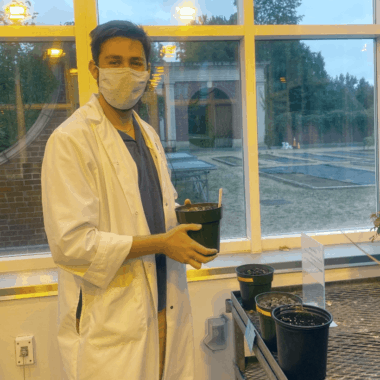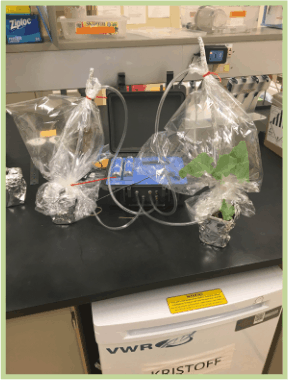
Long’s Braya, Braya longii, is an endangered perennial plant found only in the Great Northern Peninsula of Newfoundland. It is subject to annual infestations of the Diamondback moth (DBM), Plutella xylostella, who use B. longii as hosts to lay their eggs. The larvae then defoliate and destroy these host plants. P. xylostella does not only pose a threat to Braya plants but is also a major agricultural pest attacking plants such as canola, mustard and cabbage. The resistance of P. xylostella to a variety of common chemical and biological insecticides makes this insect species especially difficult to manage.
Objectives
The Diamondback moth uses plants of the Brassica family to lay their eggs. However, cues which are used by P. xylostellato locate B. longiiare not well understood. In this project, I am studying the volatiles emitted from B. longiiand Brassicaceae plants via a combination of behavioural assays, electrophysiology and chemical analysis. I will try to determine what chemical compound the Diamondback moth uses to locate B. longii and to lay their eggs. The identified compound(s) can then be used to create novel and naturally derived traps for pest management and preservation of the endangered Braya.
Methods
Volatiles are collected and extracted from various host plants of P. xylostella. Bags are wrapped around the stem of the plant and tied to collect volatiles, while air pumps through. They are then analyzed through the use of Gas Chromatography Electroantennographic detection (GC-EAD) and Gas Chromatography Mass Spectrometry (GC-MS) to determine what compound interests P. xylostella. From there, compounds are selected for behavioural assays.

Progress to date
Behavioural assays have started, where attractive volatiles on egg laying behavior will be studied. In first trials, nonanal will be treated to one radish, while the other is treated with hexane. After 72 hours, eggs on each radish will be counted to see if there is significant difference between the two treatments.
This project is honours research by biology student Andrew Lawrence under the direction of Dr. Kirk Hillier.


 Acadia University
Acadia University